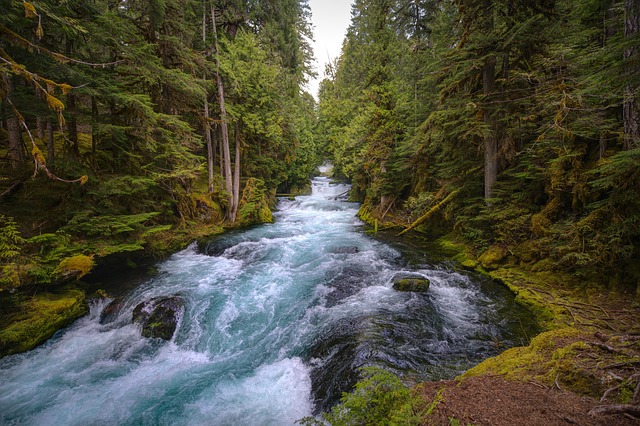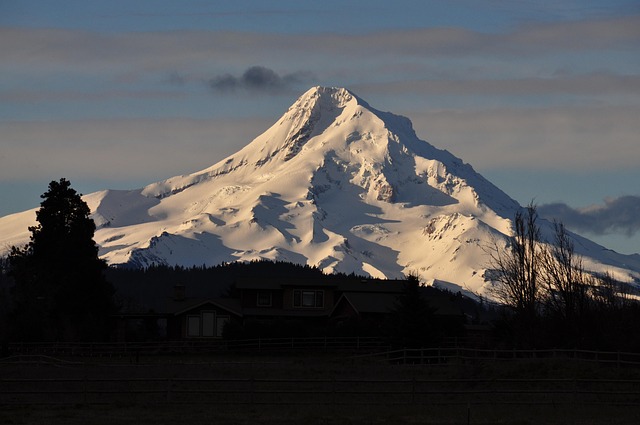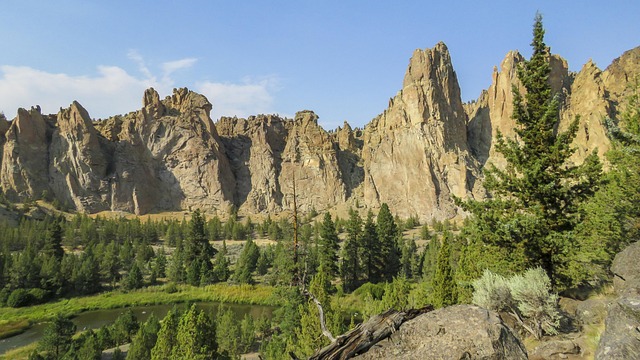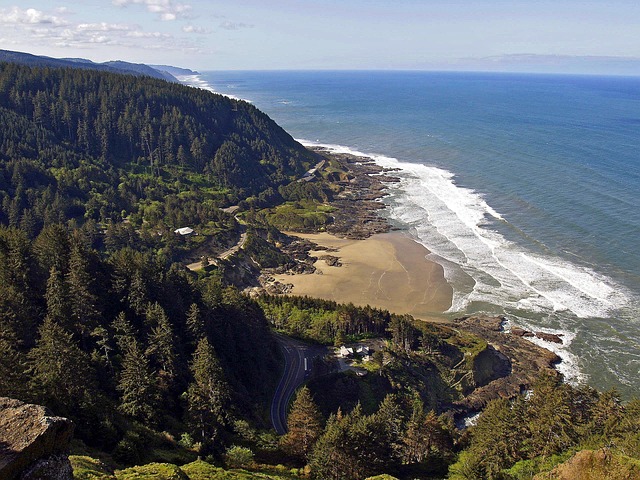In the mid-19th century, Lane County, Oregon became a bustling hub during its gold rush era, attracting thousands of diverse Lane County prospectors. This period transformed the county demographically and economically, with miners exploring rivers, streams, and mountainsides for gold. The Gold Rush era left an indelible mark on the region's culture and landscape, shaping Lane County's identity to this day. Notable sites like the Gold Hill Mine and Emigrant Lake area attracted prospectors seeking fortune, despite challenges such as difficult terrain and harsh weather conditions. This period's legacy is preserved through museums and cultural centers, continuing to inspire locals with the spirit of exploration. Today, Lane County prospectors can still pan for gold in abundant rivers and streams while adhering to Oregon state laws and safety standards.
“Uncover the captivating history of Lane County, Oregon, during its golden age—the Gold Rush era. This introduction delves into the vibrant past where Lane County prospectors played a pivotal role in shaping the region’s destiny. From the initial discovery of gold to the establishment of key mining sites, this period left an indelible mark on the county’s economy and culture. Explore the challenges faced by these intrepid explorers and discover how their legacy continues to resonate today, with modern-day gold prospecting opportunities and regulations in the same hallowed grounds.”
- Historical Background of Lane County Oregon Gold Rush
- The Role of Lane County Prospectors in the Gold Rush Era
- Key Locations and Mines in Lane County for Gold Prospecting
- Challenges Faced by 19th Century Prospectors in Lane County
- Legacy and Impact of the Gold Rush on Lane County's Economy and Culture
- Modern-Day Gold Prospecting in Lane County: Opportunities and Regulations
Historical Background of Lane County Oregon Gold Rush

In the mid-19th century, Lane County, Oregon became a hotbed of excitement as word spread about the rich gold deposits hidden within its lush forests and majestic peaks. The region’s gold rush era attracted thousands of Lane County prospectors from all walks of life, fueled by the promise of striking it rich. This period marked a significant turning point in the county’s history, transforming it from a relatively unknown territory into a bustling center of mining activity.
The gold rush had a profound impact on the local economy and demographics. Prospectors from diverse backgrounds converged on Lane County, bringing with them a mix of skills, tools, and aspirations. The once-quiet forests echoed with the sounds of hammering, panning, and digging as miners scoured rivers, streams, and mountainsides for precious veins of gold. This period left an indelible mark on the region’s culture and landscape, shaping its identity even to this day.
The Role of Lane County Prospectors in the Gold Rush Era

During the Gold Rush era, Lane County played a pivotal role in Oregon’s rich history, attracting ambitious prospectors from across the nation. These intrepid individuals, driven by the allure of gold, flocked to the county’s lush forests and majestic mountains, determined to strike it rich. The Lane County prospectors brought with them a blend of skills, from seasoned mining expertise to innovative techniques, all aimed at unearthing the precious metal. They explored every nook and cranny, from the sparkling rivers to the dense valleys, leaving no stone unturned in their pursuit of fortune.
The efforts of these lane county prospectors weren’t in vain; they significantly contributed to the state’s economic growth and left a lasting impact on the region. Their exploration not only led to substantial gold discoveries but also shaped the development of infrastructure and communities in Lane County. Many prospectors stayed, establishing permanent settlements and fostering a sense of community that still resonates today, making their legacy an integral part of Oregon’s Gold Rush narrative.
Key Locations and Mines in Lane County for Gold Prospecting

Lane County, Oregon, during the gold rush era was a haven for prospectors seeking their fortunes. Key locations and mines scattered across the county offered promising opportunities for those with panning skills and determination. The Siskiyou Mountains, known for their rich mineral deposits, became a magnet for adventurous lane county prospectors who braved the rugged terrain in search of golden nuggets.
Among the notable sites were the Gold Hill Mine, famous for its consistent strikes, and the Emigrant Lake area, where numerous small claims attracted crowds of eager prospectors. The Willamette River, flowing through the county, also held potential with its shallow waters making it accessible for sluice boxes and hand-dug pits. Lane County’s diverse landscape, from forests to rivers to mountains, presented various avenues for gold prospecting, drawing in both seasoned professionals and enthusiastic amateurs alike.
Challenges Faced by 19th Century Prospectors in Lane County

The 19th-century gold rush in Lane County, Oregon, attracted a diverse group of prospectors from all walks of life, each driven by the allure of striking it rich. However, the journey was far from easy. These early explorers faced numerous challenges as they ventured into uncharted territories. The rugged terrain and dense forests presented significant obstacles, making navigation difficult and requiring immense physical endurance.
In addition to geographical hurdles, Lane County prospectors battled harsh weather conditions, with heavy rainfall and snow often hampering their efforts. Accessing water sources and maintaining supplies were constant struggles, particularly in remote areas. Moreover, the competition for gold-rich locations was fierce, as word spread, leading to crowded mining sites and a constant need to find new, less-trodden paths.
Legacy and Impact of the Gold Rush on Lane County's Economy and Culture

The Gold Rush era left an indelible mark on Lane County, Oregon, transforming its economy and culture in significant ways. The influx of prospectors from all walks of life brought a vibrant, bustling energy to the region, as they searched for their fortunes along the sparkling rivers and rugged terrain. This period sparked a chain reaction of development, leading to the establishment of new towns and the growth of existing ones. The economic boom attracted businesses, merchants, and tradespeople, fostering a diverse and dynamic community.
The legacy of Lane County’s Gold Rush can still be felt today. It left behind a rich historical tapestry woven with stories of resilience, adventure, and discovery. Local museums and cultural centers showcase artifacts and narratives from this era, attracting visitors interested in exploring the region’s past. The spirit of exploration and entrepreneurship instilled by the prospectors continues to inspire folks, encouraging them to embrace new challenges and opportunities that arise in Lane County’s ever-evolving landscape.
Modern-Day Gold Prospecting in Lane County: Opportunities and Regulations

In modern times, Lane County continues to attract aspiring and seasoned Lane County prospectors eager to uncover hidden treasures from its rich history. Despite the passage of time since the gold rush era, panning for gold remains a popular pastime and potential source of income for many locals. The county’s rivers, streams, and historical mining sites offer opportunities for both professional and recreational gold seekers.
However, it’s crucial for Lane County prospectors to be aware of and adhere to local regulations. Oregon state laws govern prospecting activities, including permits, environmental considerations, and safety standards. Lane County authorities provide resources and guidelines to ensure responsible exploration, preserving the natural landscape while allowing enthusiasts to partake in this enduring tradition.
